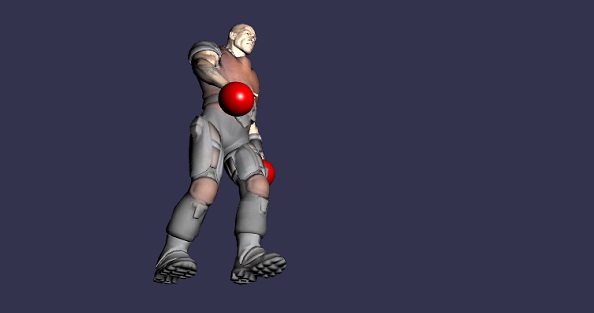
- BabylonJS - Home
- BabylonJS - Introduction
- BabylonJS - Environment Setup
- BabylonJS - Overview
- BabylonJS - Basic Elements
- BabylonJS - Materials
- BabylonJS - Animations
- BabylonJS - Cameras
- BabylonJS - Lights
- BabylonJS - Parametric Shapes
- BabylonJS - Mesh
- VectorPosition and Rotation
- BabylonJS - Decals
- BabylonJS - Curve3
- BabylonJS - Dynamic Texture
- BabylonJS - Parallax Mapping
- BabylonJS - Lens Flares
- BabylonJS - Create ScreenShot
- BabylonJS - Reflection Probes
- Standard Rendering Pipeline
- BabylonJS - ShaderMaterial
- BabylonJS - Bones and Skeletons
- BabylonJS - Physics Engine
- BabylonJS - Playing Sounds & Music
BabylonJS - Bones and Skeletons
Babylonjs offers APIs to create skeletons and bones.
Syntax
Let us now see the syntax for different functions.
For Skeleton
BABYLON.Skeleton = function (name, id, scene)
For Bone
BABYLON.Bone = function (name, skeleton, parentBone, matrix)
Skeletons and Bones can be created using blender and the same can be exported in .babylonjs.
Demo
<!doctype html>
<html>
<head>
<meta charset = "utf-8">
<title>BabylonJs - Basic Element-Creating Scene</title>
<script src = "babylon.js"></script>
<style>
canvas {width: 100%; height: 100%;}
</style>
</head>
<body>
<canvas id = "renderCanvas"></canvas>
<script type = "text/javascript">
var canvas = document.getElementById("renderCanvas");
var engine = new BABYLON.Engine(canvas, true);
var createScene = function() {
var scene = new BABYLON.Scene(engine);
//Adding a light
var light = new BABYLON.PointLight("Omni", new BABYLON.Vector3(20, 20, 100), scene);
//Adding an Arc Rotate Camera
var camera = new BABYLON.ArcRotateCamera("Camera", 0, 0.8, 100, BABYLON.Vector3.Zero(), scene);
camera.attachControl(canvas, false);
BABYLON.SceneLoader.ImportMesh(
"him", "scenes/Dude/", "Dude.babylon", scene, function (newMeshes, particleSystems, skeletons) {
var dude = newMeshes[0];
console.log(dude);
dude.rotation.y = Math.PI;
dude.position = new BABYLON.Vector3(0, 0, -80);
scene.beginAnimation(skeletons[0], 0, 100, true, 1.0);
})
return scene;
};
var scene = createScene();
engine.runRenderLoop(function() {
scene.render();
});
</script>
</body>
</html>
In the above demo link, we have used Dude.babylon mesh. You can download the json file for Dude.babylon from here −
Save the file in scenes to get the output as shown below.
Output
The above line of code generates the following output −

Explanation
For the import mesh, we have used babylonjs dude mesh.
The mesh gives us skeletons. For example, skeleton = skeletons[0];
To get bones from the skeletons, execute the following command −
skeleton.bones; //it gives a array.
In the above demo, we created 2 spheres and passed on to the mesh. For this, we executed the following commands −
sphere.attachToBone(skeleton.bones[30], dude);
And,
sphere1.attachToBone(skeleton.bones[40], dude);
attachToBone is a function wherein, you can give any mesh to the bone.
Skeleton.bones[30] and skeleton.bones[40] refers to the hands of the skeleton.